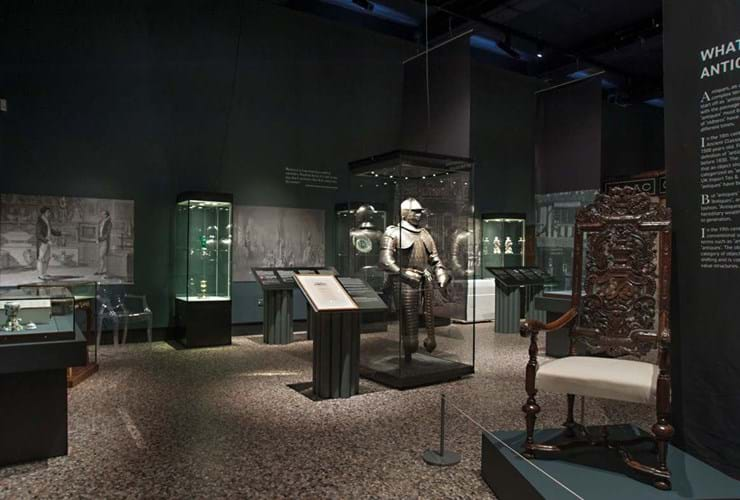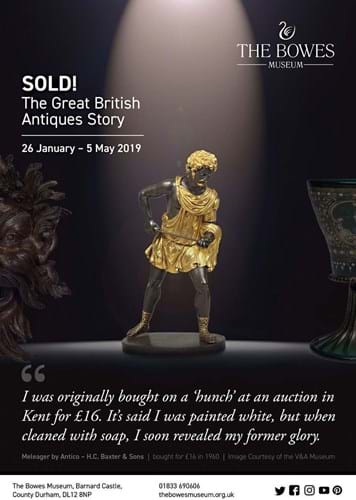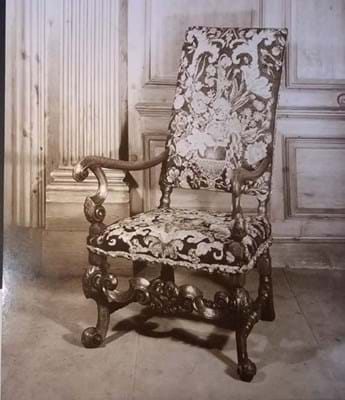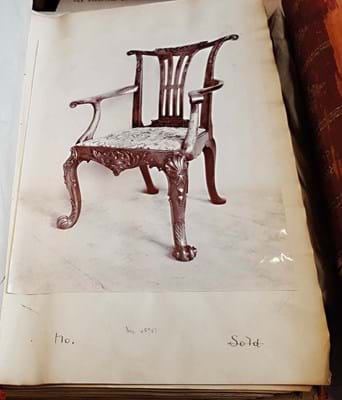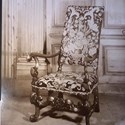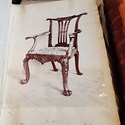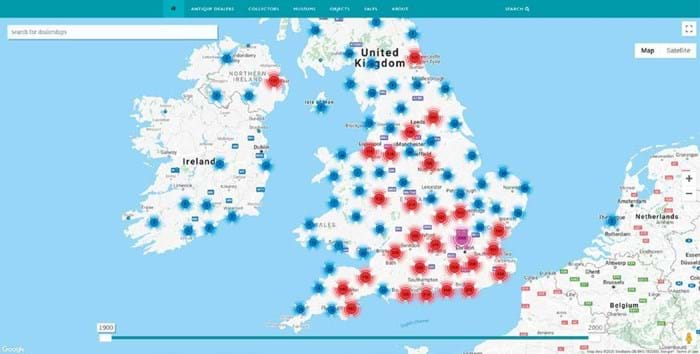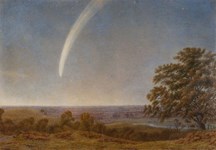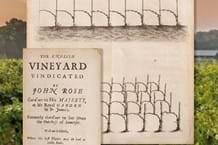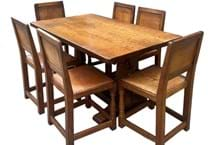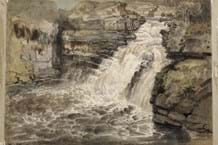The Art & Humanities Research Council (AHRC) Year of the Dealer project began as research into the history of the antiques trade and developed to encompass a newly produced film and the creation of an oral archive of dealers.
The project has been a long time in the planning and due to the coronavirus pandemic was extended: originally scheduled to run from June 2019 to May 2020, it will now run until March 2022.
It is the brainchild of Dr Mark Westgarth, associate professor in art history and museum studies and director of the centre for the study of the art and antiques market at the University of Leeds. The former antiques dealer has been studying and researching the history of antique dealing for the past 20 years. He is the principal investigator for the Year of the Dealer project with a co-investigator, Dr Eleanor Quince, of the University of Southampton.
He has also written a number of books on the subject including The Emergence of the Antique and Curiosity Dealer in Britain 1815-1850: The Commodification of Historical Objects.
Here, Dr Westgarth details how the project developed under constantly changing circumstances over the past two years.

Dr Mark Westgarth, associate professor in art history and museum studies at the University of Leeds.
Beginnings
The launch of the Antiques Dealer research project at the University of Leeds was reported on the front page of the ATG back in November 2013 (ATG No 2117), when I was quoted: “We envisage the project to be the start of a new research area into the history of the antique trade more generally.”
Since then, the project has continued to develop, expanding well beyond its initial ambitions.
The formal start of the project was a successful funding application to the AHRC (£231,592) for ‘Antique Dealers: the British Antique Trade in the 20th century, a cultural geography’ (2013-16).
But the research project has much earlier beginnings, emerging out of research in the early 2000s into the history of the development of the antiques trade in the 19th century which resulted in the publication of A Biographical Dictionary of 19th Century Antique & Curiosity Dealers (2009). A free e-print is available at eprints.whiterose.ac.uk/42902/6/WestgarthM1.pdf
The project has drawn in enormous support from the antiques trade organisations, the trade press, and from individual dealers over the years. The ATG supported the project right from the start and has regularly reported on developments – this article summarises the main outcomes of the project, highlighting key achievements, as well as some of the challenges, and suggests where the project might continue to expand and develop in the future.
Over the last eight years the project has been as a catalyst for the establishment of key archive resources at the Brotherton Library at the University of Leeds; created innovative research websites; established a growing oral history archive; facilitated the development of bespoke undergraduate and postgraduate university teaching and has been the subject of a major exhibition, SOLD! The Great British Antiques Story at The Bowes Museum in Barnard Castle in 2019.
More recently, following further successful funding applications to the Art & Humanities Research Council (AHRC), we have made a film of the play Quinneys (1915) and are planning multimedia ‘antique dealer’ trails at several of the UK’s leading museums.
The antique dealer trails, originally planned as PDF ‘leaflets’ downloaded to your mobile phone, will now be in the format of digital films, with multimedia content.
The SOLD! series of events
SOLD! The Year of the Dealer: Antique Dealers, Art Markets and Museums (2019-22), an ‘Impact & Engagement’ project of workshops, lectures and exhibitions, was also funded by the Art & Humanities Research Council (£100,000).
Extra ‘in kind’ support of £64,000 came from the project collaborators: The Victoria and Albert Museum, The National Museum, Scotland, The Ashmolean Museum, The Lady Lever Art Gallery, The Bowes Museum, Temple Newsam, Preston Park Museum as well as one of the UK’s leading antique dealing businesses, H Blairman & Sons.
We managed to complete several activities and events before Covid-19 intervened, including workshops at The Bowes Museum and The Ashmolean Museum and a public ‘In Conversation’ event at the Lady Lever Art Gallery, Port Sunlight, near Liverpool.
Planning the remaining events and activities in the midst of the Covid-19 pandemic has been a real challenge, with social-distancing restrictions and several members of staff at our collaborating partner museums on furlough – these have been the real short-term effects of the pandemic.
But now restrictions have eased we are replanning the YoD project, with plans for an ‘In Conversation’ event at Temple Newsam, Leeds.
Antiques dealer archives
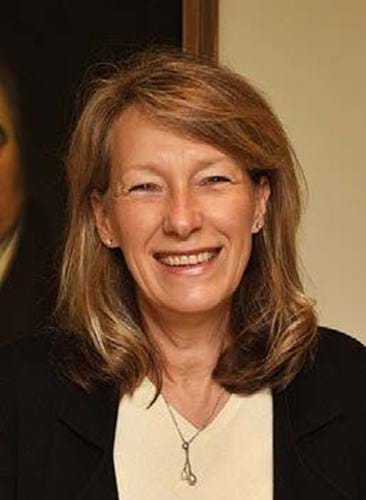
Louise Phillips.
We completed our 44th Oral History interview recently – with Louise Phillips, of Elaine Phillips Antiques, the new chair of the British Antique Dealers’ Association (BADA) – and have several more interviews planned over the coming months.
The oral histories project has been helped enormously by antiques dealer associations BADA and LAPADA which have both, at various stages, provided funding for travel to allow us to continue the interviews, and we are so grateful to both BADA and LAPADA for supporting the research project.
One of the unintended consequences of the research project has been the creation of an extraordinary range of antiques dealer archives at the Brotherton Library Special Collections (BLSC) at the University of Leeds.
Generously donated by several leading dealers, such as Jerome Phillips (Phillips of Hitchin) and Georgina Gough (daughter of Ronald A Lee), the archives continue to attract donations and as a result the BLSC has formally adopted art and antique dealer archives as part of their acquisition policy.
Perhaps one of the most extraordinary results of the project has been the gift to the university of the library and research archives of John Bedford (1941-2019).
John, together with his brother William, established the antique dealing business William Bedford, which would ultimately become the first antiques dealing business listed on the Stock Exchange. John’s gift of rare books, manuscripts, artworks and objects, together with a very substantial endowment, is one of the largest bequests ever made to the university.
The Antique Dealers Research Project has also continued to have amazing support from members of the antiques trade with regular donations of antique dealer ephemera, catalogues and information.
And since 2013 we have had more than 50 volunteer researchers and archive assistants working on various aspects of the antique dealer’s projects. We have also had more than 160 individuals who have supported the projects by sharing information or sending us antique dealer material. This a tremendous endorsement and testament to the interest that the project has garnered in the antiques trade and the general public.
Digital resources
The Antique Dealers Research Project Interactive Map website traces the development of the antique trade in Britain 1900-2000. This complex, bespoke software application has evolved more slowly than planned, but there are now more than 11,000 dealers located in the map. The map is proving to be an invaluable research tool for researchers across the world and is regularly cited in published literature on the subject of the art market.
Alongside the map the research blog (antiquedealersblog.com) began in October 2013 with a short blog post announcing the start of the antique dealers’ research project. So far, we’ve posted more than 200 blog posts, amounting to more than 125,000 words, with regular themes and updates on various research activities.
The project has also embraced social media with a Twitter feed and an Instagram account.
Teaching the history of dealing
The research project has also led to the development of a year three undergraduate module ARTF3099 ‘Antique Dealers: the market for ‘decorative art’ from curiosities to retro’ at the University of Leeds, which is now in its third year and as far as we know is the only module of its type in the UK university higher education system.
Quinneys, the film (2021)
The Covid-19 crisis had a real impact on our plans to restage the play Quinneys (1915), which is one of the key outputs of the Year of the Dealer project. Originally, we had planned to stage one live theatre performance of the play, back in March 2020, but that had to be cancelled.
Re-planning a live performance has proved to be a considerable challenge, with social distancing still in place and theatres closed until very recently. However, out of this adversity we have created what we think will be an even better, and more impactful, project: we have made Quinneys into a film.
Directed by Dr George Rodosthenous, who leads on the MA in Theatre Directing at the University of Leeds in the School of Performance & Cultural Industries, and with student actors, we screened the film at special preview events in York and at the Victoria and Albert Museum in November and December. We will be releasing the film as a free download via the project website.
Quinneys is a story of the life and activities of the fictional antique dealer Joseph Quinney and was written by the prolific writer Horace Annesley Vachell (1861-1955).
Vachell based the character of Quinney on the real-life antique dealer Thomas Rohan (1860/1-1940), who was trading as ‘A. Rohan’ in Bournemouth and Southampton from c.1900 until he retired in 1937.
The first performance of the play took place on April 20, 1915 at the Theatre Royal, Haymarket, London. It was regularly performed all over the world from 1915 until the 1950s – it was even made into a film, twice – in 1919 and 1928 – but the British Film Institute records indicate that both films have sadly been lost.
The set for Quinneys is also a key part of the project. When the play was first performed leading antique dealers of the day, such as Walter and Ernest Thornton-Smith and Moss Harris & Sons, loaned genuine antiques for the set. For our filming, several leading antique dealers of today generously loaned antiques for the set; and we would like to especially thank David Love of David Love Antiques, Harrogate, Simon Myers of RN Myers & Son in Gargrave and Tony Lumb of Charles Lumb Antiques, formerly of Harrogate, for loaning such special objects for the film.
What Next?
We are currently drafting a new AHRC funding application, ‘The Transatlantic Antiques Trade: antiques, heritage and the market 1870-1939’ in which we hope to draw in colleagues from the US. If successful, this will be a four-year project starting in 2023, involving a re-design of the existing map website application and addressing new research questions and objectives – keep your eye on the Antique Dealers Research Project website (see below).

